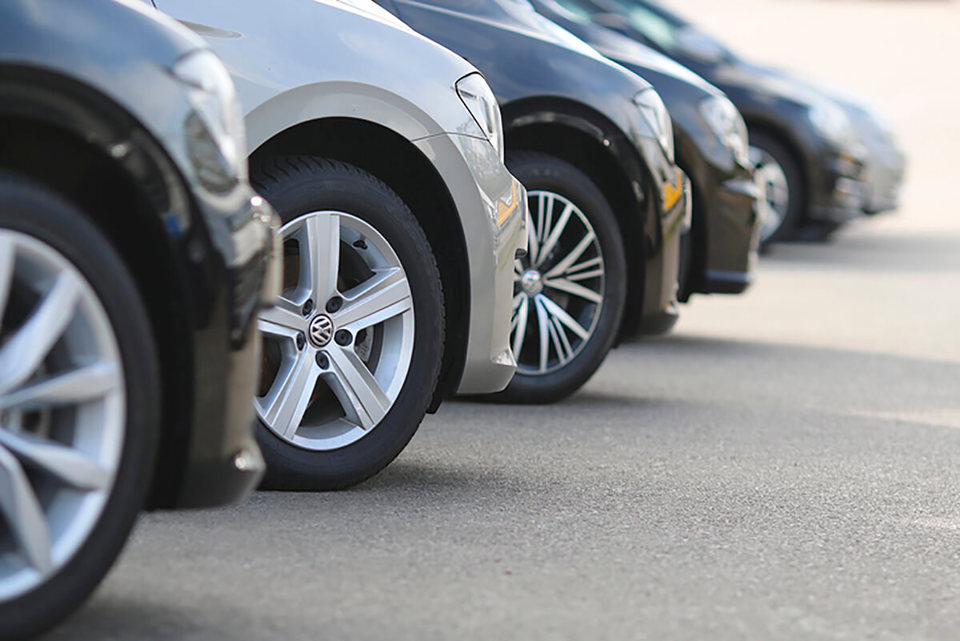Fleet managers must return to the drawing board in compiling company car choice lists if benefit-in-kind tax increases over the next five years are to be kept to an absolute minimum for employees.
Days Contract Hire says that company car benefit-in-kind tax changes announced in the recent Budget are sending confusing signals to fleet decision-makers and drivers, with drivers of higher emission cars (76g/km and above) facing the lowest tax increases over the next five years.
While the chancellor said in his Budget statement that he was using the company car tax system to “increase the discount” for ultra-low emission vehicles - defined by the Government as models with CO2 emissions of 75g/km and below - the reality is that benefit-in-kind rates for those vehicles will increase at a significantly faster rate over the next five years than for higher emission cars.
In the Budget, George Osborne announced that in 2017/18 and 2018/19 the appropriate percentage of list price subject to tax would increase by two percentage points for cars emitting more than 75g/km of carbon dioxide (CO2), to a maximum of 37%.
However, the chancellor has changed his mind in relation to previously announced increases in rates for the two lowest thresholds - 0-50g/km and 51-75g/km - and altered the differential between those rates and the 76-94 g/km threshold.
In Budget 2013, he said that the differential between the 0-50 and 51-75g/km CO2 bands and between the 51-75 and 76-94g/km bands would be three percentage points in 2017/18 reducing to two percentage points in 2018/19.
However, in Budget 2014 he changed his mind and said the differential would be four percentage points and three percentage points respectively.
By maintaining a higher threshold differential than was previously announced the Chancellor can claim to be incentivising the take-up of ultra-low emission low emission cars; but the reality is that in choosing such models drivers will face massive increases in their tax bills over the next few years.
For example, an employee choosing a pure electric Nissan Leaf (0g/km) will have 0% tax liability in 2014/15 rising to paying 13% of the model’s P11D value over the next five financial years.
Meanwhile, an employee choosing a Toyota Plug-in hybrid (49g/km) will see their tax charge rise from 5% in 2014/15 to 13% in 2018/19 - an eight percentage point increase and more than doubling their tax liability.
An employee selecting a vehicle with emissions of 51-75g/km - the Government’s Vehicle Certification Agency currently lists just one vehicle as being on sale in that emissions bracket, the Porsche Panamera Hybrid (71g/km) - will see the percentage of car P11D value taxed rising from 5% in 2014/15 to 16% in 2018/19 - more than tripling.
Move up a further tax band threshold and the driver of a Lexus CT200 Hybrid (87g/km) will see the tax charged moving from the 11% bracket to the 19% bracket over the next five years.
That eight percentage point rise for the Lexus driver is identical to the rise for the employee at the wheel of a Ford Fiesta 1.0 Zetec (99g/km) and for other drivers choosing cars with higher emissions.
However, because the Government has chosen to abolish the diesel tax surcharge in 2016/17 the tax winners will be employees at the wheel of diesel models.
An employee choosing a BMW 116d Efficient Dynamics (99g/km) will see the tax charge rising from 15% to 20% over the next five years having actually reduced in 2016/17 compared with 2015/16.
Simultaneously, while employees will see their company car benefit-in-kind tax bills rise employers will incur increases in Class 1A National Insurance contributions, which are due on benefits-in-kind.
Days Contract Hire director Aled Williams said: “The Government is sending the fleet industry confusing signals. While it wants businesses and company car drivers to select ultra-low emission models they will be subject to the highest tax increases over the next five years.
“Simultaneously, the Government’s previous decision to remove the 3% diesel surcharge was welcomed, but it is the increase in the use of diesel engined vehicles that is at the route of European Union and ministerial concerns over air quality standards.
"As a result, we can expect to see more towns and cities introducing ultra-low emission vehicle zones such as the one being planned by Transport for London for 2020.”
Williams continued: “We will continue to advise clients to base company car choice lists on vehicle whole life costs.
"Even with benefit-in-kind tax rates to increase significantly for ultra-low emission cars over the next five years, we would anticipate tax rises to be at least partially offset by fuel bill savings - the lower a car’s CO2 figure the better its fuel economy.
“Nevertheless, ultra-low emission cars, including the new breed of pure electric and range-extender models, typically have significantly higher list prices than similarly sized petrol and diesel-engined models.
“Therefore, we will be working with our customers to help them compile choice lists that deliver to drivers the best possible selection of tax competitive vehicles, while continuing to ensure they are fit for purpose and taking in to account whole life costs.”

















Login to comment
Comments
No comments have been made yet.